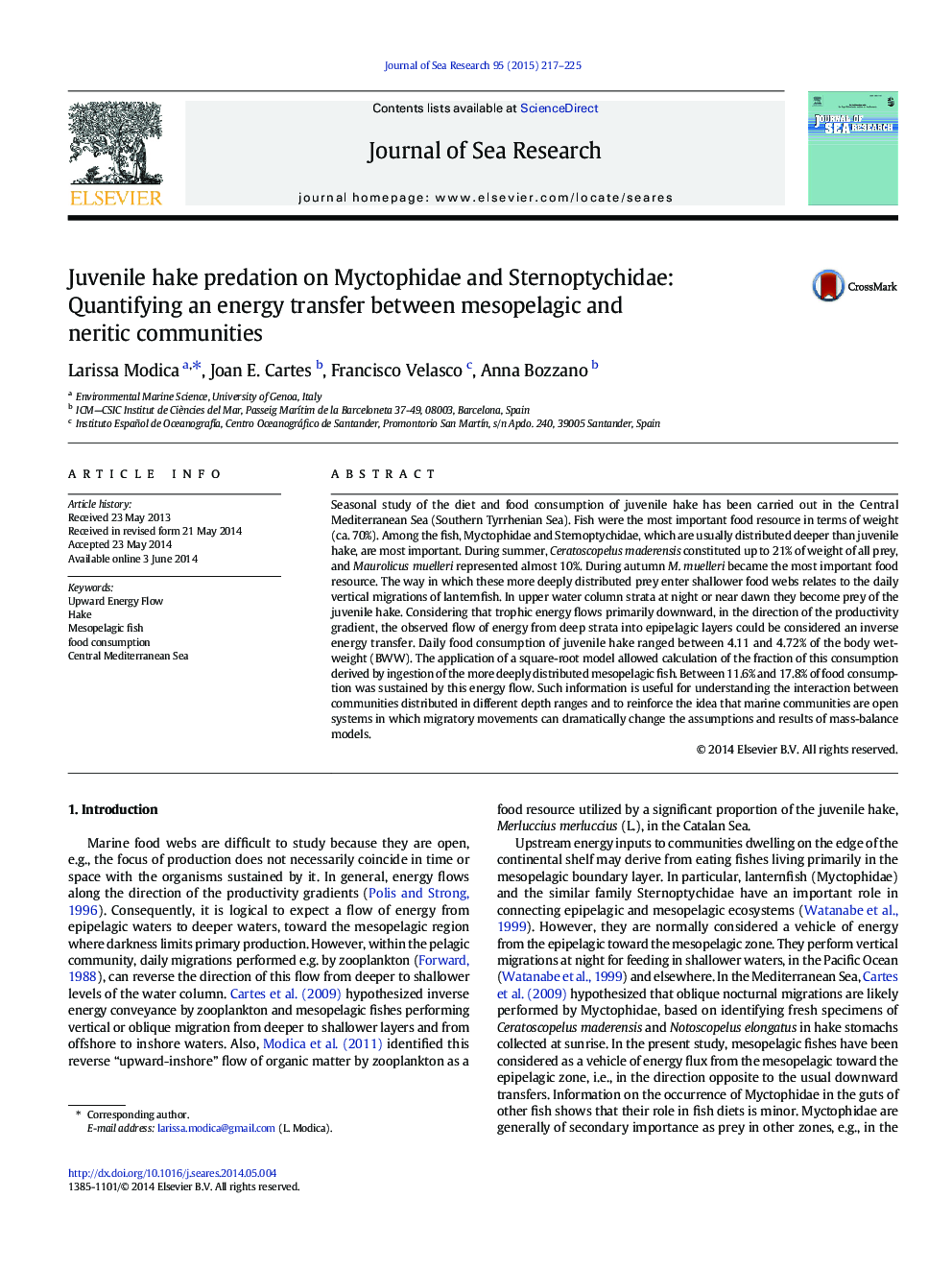| کد مقاله | کد نشریه | سال انتشار | مقاله انگلیسی | نسخه تمام متن |
|---|---|---|---|---|
| 4549763 | 1627479 | 2015 | 9 صفحه PDF | دانلود رایگان |

• We analyzed trophic relationships and food consumption of juvenile European hake.
• We assessed an energy transfer between mesopelagic and neritic communities.
• We assessed this energy flow in areas with upwelling or strong water circulation.
• We identified hake as energy receiver and mesopelagic fish as energy donor.
• We quantified that 1/5 of energy intake of hake is due to deeper distributed fish.
Seasonal study of the diet and food consumption of juvenile hake has been carried out in the Central Mediterranean Sea (Southern Tyrrhenian Sea). Fish were the most important food resource in terms of weight (ca. 70%). Among the fish, Myctophidae and Sternoptychidae, which are usually distributed deeper than juvenile hake, are most important. During summer, Ceratoscopelus maderensis constituted up to 21% of weight of all prey, and Maurolicus muelleri represented almost 10%. During autumn M. muelleri became the most important food resource. The way in which these more deeply distributed prey enter shallower food webs relates to the daily vertical migrations of lanternfish. In upper water column strata at night or near dawn they become prey of the juvenile hake. Considering that trophic energy flows primarily downward, in the direction of the productivity gradient, the observed flow of energy from deep strata into epipelagic layers could be considered an inverse energy transfer. Daily food consumption of juvenile hake ranged between 4.11 and 4.72% of the body wet-weight (BWW). The application of a square-root model allowed calculation of the fraction of this consumption derived by ingestion of the more deeply distributed mesopelagic fish. Between 11.6% and 17.8% of food consumption was sustained by this energy flow. Such information is useful for understanding the interaction between communities distributed in different depth ranges and to reinforce the idea that marine communities are open systems in which migratory movements can dramatically change the assumptions and results of mass-balance models.
Journal: Journal of Sea Research - Volume 95, January 2015, Pages 217–225